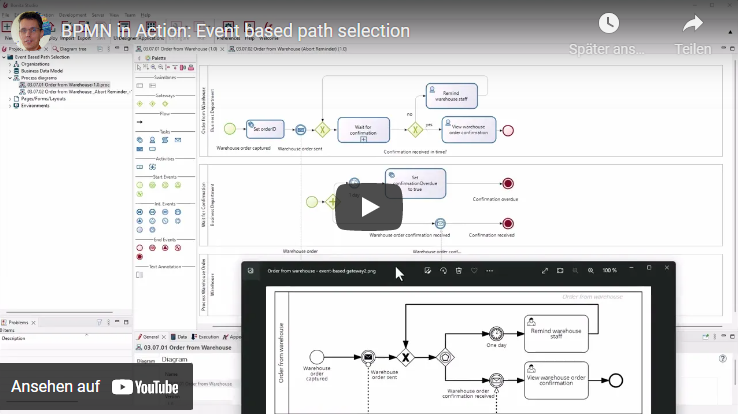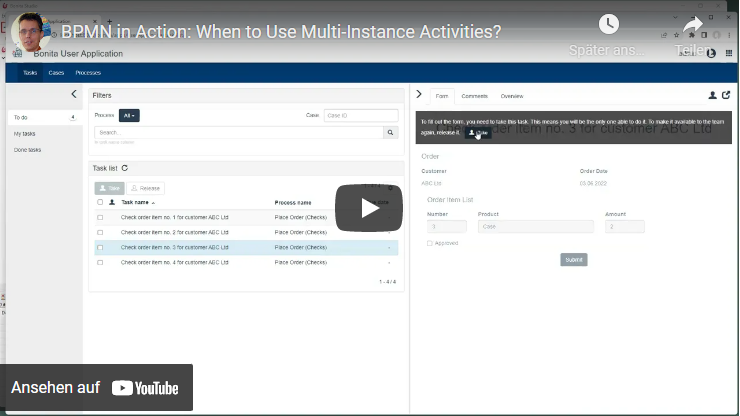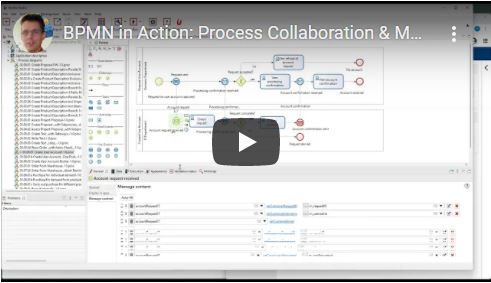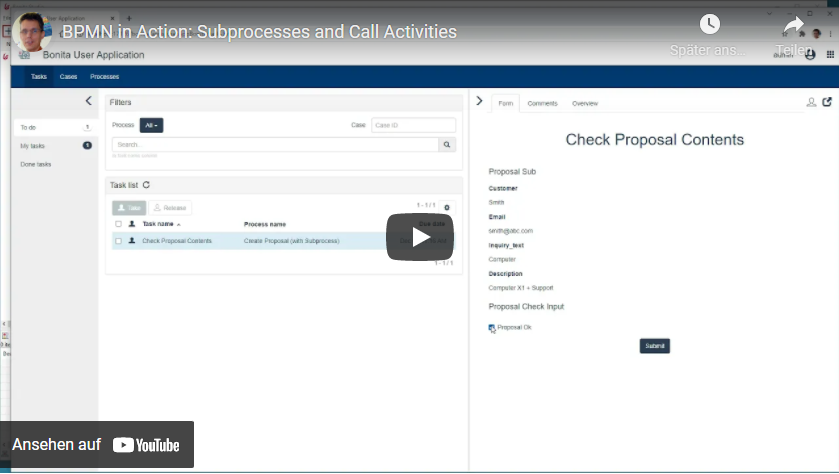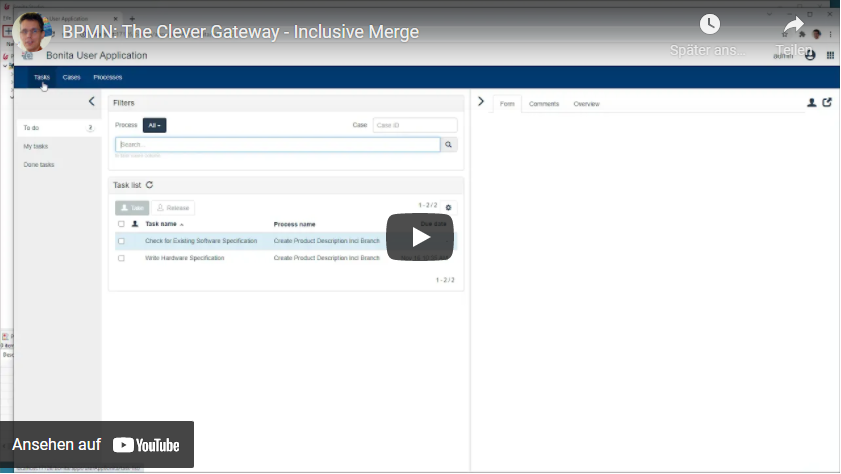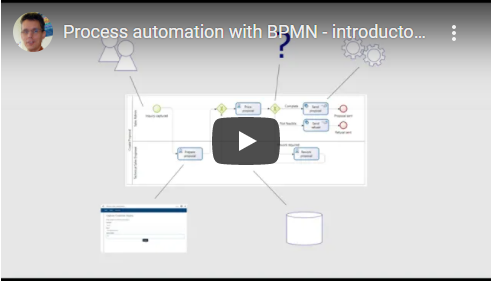Most BPMN models contain splits in the control flow. Most frequently used is probably the exclusive gateway. Such a gateway decides which way to go – based on data, such as the value of an order. An event-based gateway, on the other hand, decides on the basis of events. This gateway waits for several events to occur. The event that occurs first, „wins“ – and the path of this event is selected.
The process presented in the video contains a typical example of how to use an event-based gateway. At the gateway, the process waits for a message to arrive. If it isn’t received within a certain time span, a reaction is triggered, such as reminding the partner of the overdue message.
Unfortunately, the BPM-system Bonita – which is used for creating the examples in this series – doesn’t support event-based gateways. The video shows how to achieve the same behavior in a different way.
